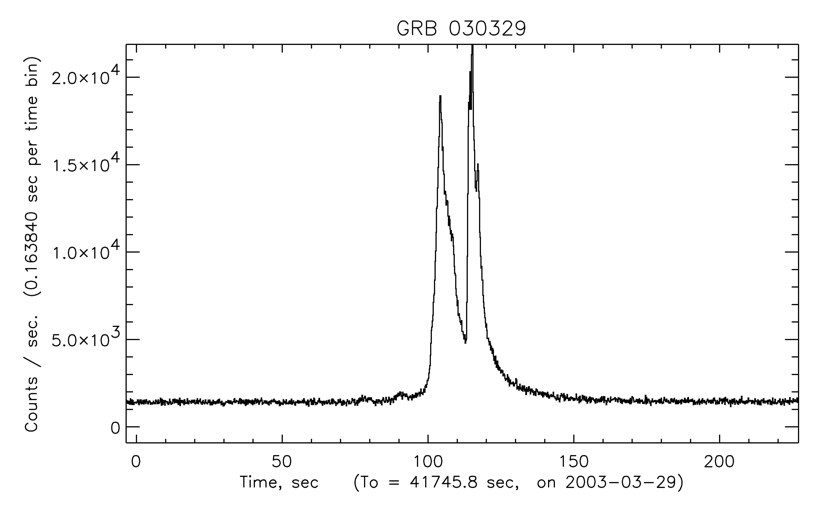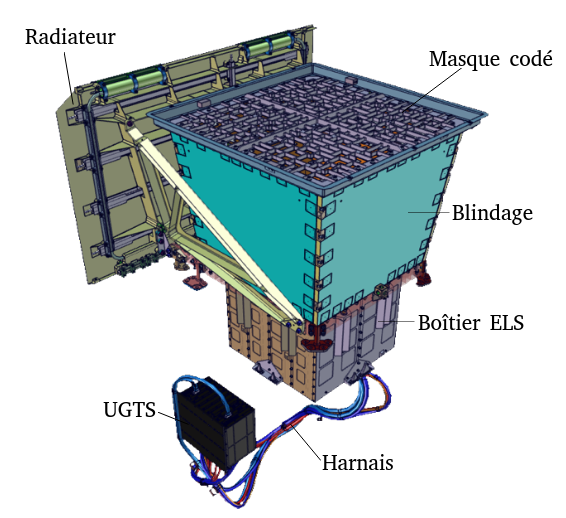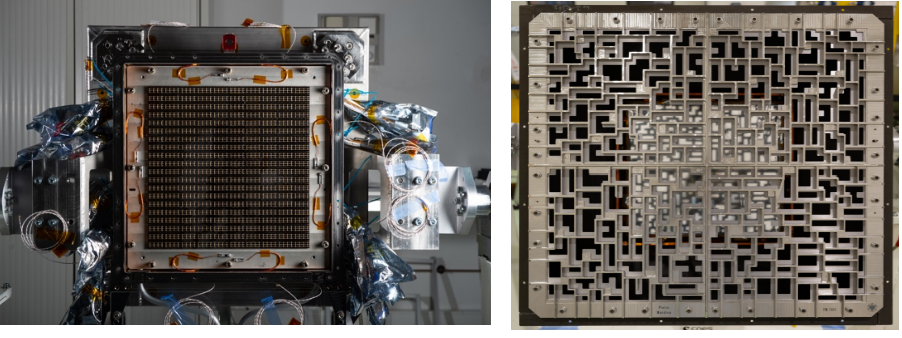About
The main objective of the SVOM/ECLAIRs instrument is to autonomouly detect and localize Gamma-Ray Bursts (GRBs). These extreme objects appear as X-/Gamma-ray flashes randomly distributed on the sky with durations from a few milli-seconds to a few thousands of seconds. GRBs are thought to be associated with very energetic cosmic explosions signaling the birth of stellar-mass black holes due to the gravitational core-collapse of some massive stars or the coalescence of binary neutron stars or binary neutron star - black hole. Being very luminous, GRBs can be seen at large distance in the Universe and therefore used as probes for studying dark regions of the early Universe. ECLAIRs with a field of view covering 15 % of the sky plays a critical role in detecting and rapidly providing the localisation of GRBs to allow for a prompt multi-messenger / multi-wavelength follow-up.

Fig. 1. Example of a lightcurve for a Gamma-ray burst with a duration of around 30 seconds. Credits: HETE collaboration.
Building sky images in hard X-rays requires dedicated devices since it is very difficult to focus these photons. An imaging technique often used is the coded mask imaging technique involving the projection of shadows (like for sundials) from a mask with a carefully designed pattern (see Figure 2) onto a pixelated detection plane. The images thus created are called shadowgrams and their shape naturally depends on the position of the astrophysical sources within the field of view of the instrument. The appearance of a new source like a GRB will result in a change in the shadowgrams. Measuring the variations in the recorded shadowgrams in an automatic manner on-board ECLAIRs will enable detection of GRBs. Then, the deconvolution of the shadowgrams using the mask pattern is employed to reconstruct sky images permitting their localization. In order for this technique to work efficiently it is mandatory to perform dedicated studies to optimize the instrument (i.e. number and dimension of the detectors, mask pattern, mask-to-detector distance, field of view, etc.)
The main sub-systems of the ECLAIRS camera are displayed in Figure 2. From the top, the coded mask made of a thousand blocking/transparent elements ~1 cm in size allows «filtering» of the X-rays going through the mask and illuminating the detection plane placed 46 cm underneath. The detection plane (DPIX) is made of 6400 4 x 4 mm² and 1 mm thick Schottky type CdTe detectors. On the schematic representation, the detection plane is hidden by the passive shielding made of layers of lead and copper (located on the inside) and preventing photons from outside the field of view reaching the detection plane. The detectors are read by 200 ASIC (each one dealing with 32 detectors) connected to readout electronics (ELS) tagging detected events in time, position on the plane and energy. The electronics are also able to distinguish multiple events appearing at the same time over different coincidental time windows. The UGTS is the data processing unit in charge of managing the telescope and running the trigger algorithms to detect and localize GRBs. Finally, the radiator cools the detector down to –20°C, a temperature mitigating the effects of their electronic noise and enabling us to reach a low-energy threshold of 4 keV.


Fig. 2. Left – Schematic diagram of ECLAIRs. Middle – Photo of the flight model of the pixelated detection plane (DPIX) prior to its integration to form the complete telescope. Right – Photo of the flight model of the ECLAIRs telescope. Credits: CNES
The performance of the instrument is presented in the table below.
| Energy range | 4 - 150 keV |
| Detecting area | 1000 cm² |
| Detectors | 6400 CdTe detectors |
| Effective area in 10-70 keV | ≥ 340 cm² |
| Effective area @ 6 keV | ≥ 200 cm² |
| Field of view | 2.05 sr total |
| Sensitivity to 1 second long GRB | 2.5 10−8 erg cm⁻² s⁻¹ in [5−50] keV |
| Source Localization Error | 11.5 arcmin for sources with SNR=8 |
| Energy resolution at 60 keV | < 1.6 keV |
| Time resolution – dead time | 20 µs – < 5% for 10⁵ c/s |
| Data acquisition mode | Photon mode |
| Data rate | ≤ 18 Gb/day |
| Energy calibration accuracy | ≤ 0.3 keV below 80 keV |
| Additional features | Automatic detection and inhibition of noisy pixels single/multiple interaction tagging Energy calibration with fluorescence lines of the shield On-board catalog of known bright X-ray sources |